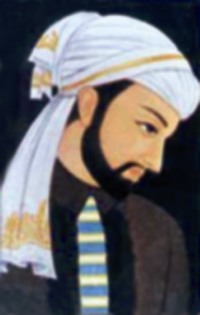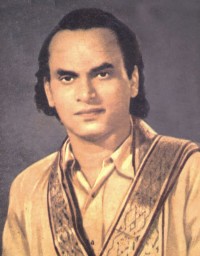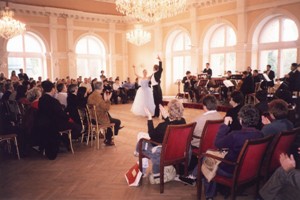NEWS & NOTES

AN ANNUAL FESTIVAL TO REMEMBER Music and dance at San Diego - SHANKAR RAMACHANDRAN Combine bright San Diego weather, a vibrant Indian community, and a dedicated board committed to promoting Indian classical music and you get the third annual Spring Music Festival at IFAASD. During its course, more than forty artists perform more than a dozen music and dance concerts. A hundred and fifty local Carnatic music students share their song. Several thousand meals are cooked and served by the local community. San Diego has hosted another music and dance festival that will leave seeds of a cultural memory in the minds, hearts and brains of all who attend and participate. Pride and joy are visible everywhere. Following mangala isai by Injikkudi Subramaniam and party, the kuthu vilakku is lit. Revathi Subramanian, music teacher and IFAASD board member, sings a GNB song in invocation. Then it is time for the inaugural concert. Some 300 listeners are treated to an excellent recital by the San Diego sitar virtuoso Kartik Seshadri, accompanied by Arup Chattopadhyay on the tabla. Kartik presents Hamsadhwani and Simhendramadhyamam with perfect sruti alignment and poise. “There are stylistic differences between Carnatic music and Hindustani music”, he explains in a brief introduction, “but the divisions are not as clear as sometimes we think they are.” A student of Pandit Ravi Shankar, an accomplished artist and teacher, head of the Indian Classical Music Program at UCSD, Kartik Seshadri sets a distinctive tone for the festival with his concert. After playing his own composition – a bandish in Simhendramadhyamam – Kartik concludes the concert with a soulful rendering of raga Pahadi Jhinjhoti. Guests sample the home-made Hyderabadi dinner and garam chai in the tranquil architectural outdoor setting of the auditorium at the world renowned Academy of the Neurosciences.
COVER STORY

THE SITAR Its journey to the pinnacle - DEEPAK S. RAJA The post-independence era has been the Golden Age of instrumental music in the Hindustani tradition. Though exceptional musicianship on several instruments has helped instrumental music to match vocal music in terms of popularity and stature, a large part of the credit for the phenomenon goes to the sitar and to sitarists. The instrument entered the mainstream as an heir to the medieval rudra veena to later become its rival, and finally, its survivor. Its journey to the pinnacle of Hindustani instrumental music has taken only about 300 years. The origins and brief history The sitar is a long-necked fretted lute of the plucked variety. Instruments of this variety have been observed in Mesopotamian figurines as old as 2000 BC. Later manifestations of this variety are the Greek pandoora, and the Arabian tambour. Though India has had a considerable tradition of short-necked lutes, the long-necked group has been better represented by a different family of instruments – tube-zithers – such as the rudra veena and vichitra veena. Lutes of the long-necked variety are believed to have come from Central Asia.
CENTENARY FEATURE

M.K. TYAGARAJA BHAGAVATAR - II A fate worse than death - VAMANAN The Descent A magazine called Cinema Thoothu hit the stands in the middle of 1943. It was the baby of C.N. Lakshmikanthan, a man once convicted for forgery, in a new avatar as a film journalist. Cinema Thoothu announced that it would expose the dark lives of actors, actresses and producers and kept its word with salacious and spicy stories about the leading figures of the cinema world. Tyagaraja Bhagavatar, comedian N.S. Krishnan and film producer-director S.M. Sriramulu Naidu, who were among the prime targets of Lakshmikanthan, petitioned Governor Arthur Hope and managed to secure a ban on the magazine. Lakshmikanthan resurfaced under the improbable banner of Hindu Nesan (Friend of Hindus), his new acquisition from its needy owner. Lakshmikanthan now began his work with the added vigour of vengeance. Hindu Nesan was a tabloid which began to strike weekly terror among its victims. They were not only exposed but also derided and chastised for their immorality. Priced at a couple of annas, Hindu Nesan, with its fare of meaty muckraking and heady moralising, was a sellout. Some shopkeepers sold it for a rupee. Even then there was no paucity of buyers. Some rented it out at four annas a read. Avid readers of Hindu Nesan gathered in parks, railway stations and other public places. Lakshmikanthan was setting new trends in popular journalism and was all set to become the grand-dad, even if a vicious one, of the gossipmongers of the future.
REAR WINDOW

Vienna’s waltz with music - SADHANA RAO If the air of Vienna were to be captured in a box and then put through a digital signal processing loop, the algorithms would reveal an intimate connection with the sounds of music. Five hundred year-old musical compositions resonate alongside contemporary contributions. Air waves which have preserved this music still breathe and waltz with musical scores. As Austria – from Vienna – negotiated their pact with war and peace, as Sigmund Freud raised pondering and disturbing questions about life, the music notes tumble ceaselessly. Amidst Vienna’s church steeples, gilded domes and coffee shops, many strands and strains of music – the symphony, concerto, sonata, opera and operetta – took form and shape. Many composers – Haydn, Strauss, Mozart, Beethoven – made Vienna their base. Mozart’s physical body may have been buried in a pauper’s grave, but his music had enduring ties with the city and was beamed from here like a centrifugal force across continents, across borders. A visit to Vienna is like going into a live musical library. Once the doors open out, it is difficult to close. Musical impressions on cityscapes From the early 12th century, Vienna was known for its troubadours (Minnesinger) and strolling musicians. A stroll on any pedestrian pathway, a halt on a city square reveals the retained legacy of the troubadours. Woven into the city’s rhythms is the ever-present sure beat of music. A Viennese serendipity was to chance upon a performance of Blue Danube in a public square – a programme that was a part of town celebrations. This encounter coalesced the soundscape and cityscape into a quintessential, moving and vibrant Viennese image. The Blue Danube is the common English title of An der Schonen blauen Donau (on the beautiful Blue Danube) a waltz composed by Johann Strauss II (in 1866). Vienna nestles in the Danube valley and the river Danube slices Vienna into two unequal parts. Strauss in his composer’s mood must have subliminally absorbed the ethos of Vienna’s geography. The Blue Danube went on to become the unofficial Austrian national anthem. On New Year’s Eve, the waltz is traditionally broadcast by television and radio stations at midnight. It was a custom-made summer treat to partake of an early evening rendering.


